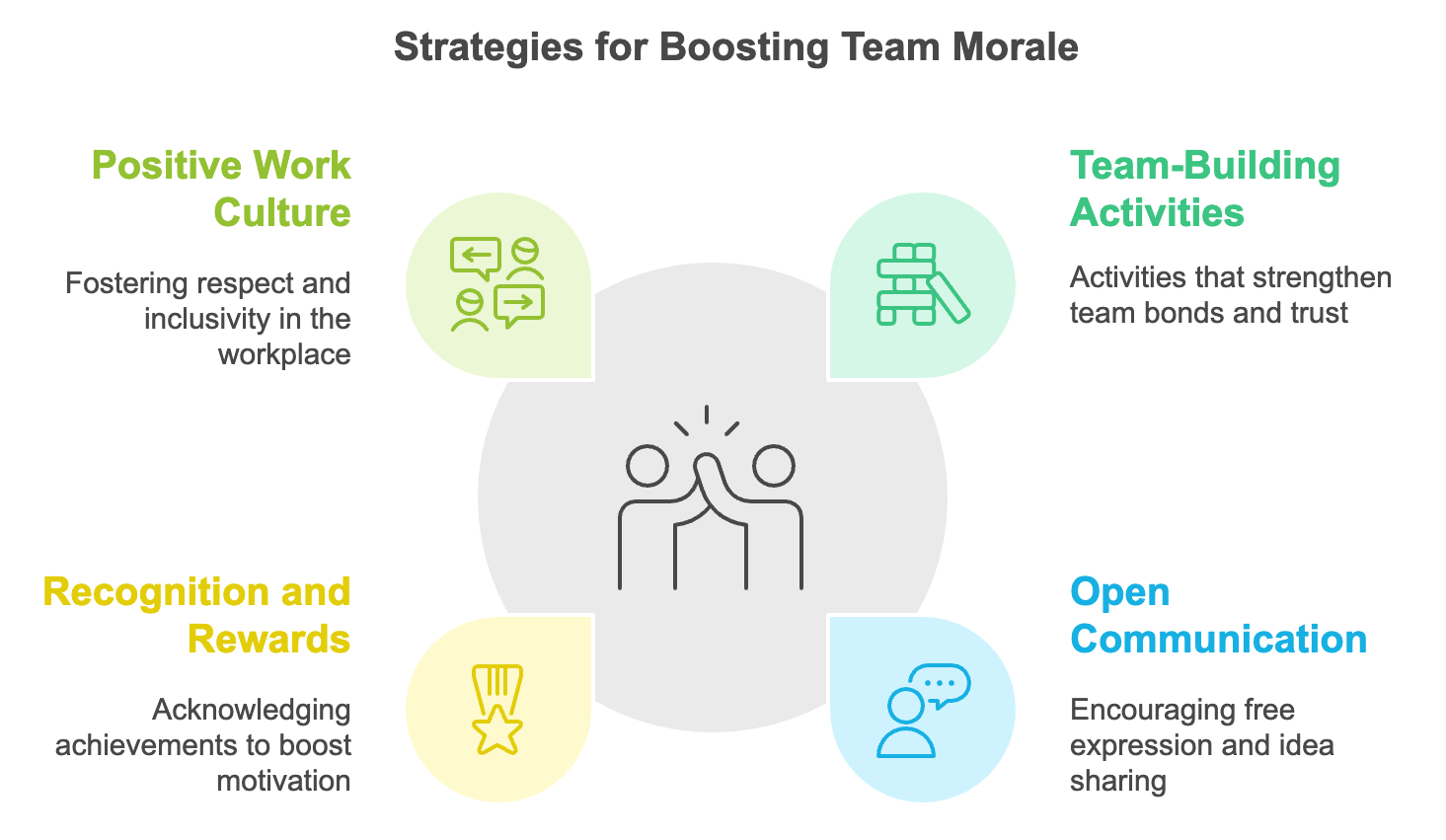Team morale is a vital element for the success of any organization. High team morale leads to increased productivity, improved collaboration, and a more positive workplace culture. This article will explore what team morale is, why it matters, signs of low morale, and effective ways to improve and maintain team morale in the long run.
Table of Contents
- What is Team Morale?
- Why is Team Morale Important?
- Signs of Low Team Morale
- Effective Ways to Improve Team Morale
- How to Maintain High Team Morale Long-term
What is Team Morale?
Team morale refers to the collective feelings, attitude, and overall satisfaction of the members within a team. It reflects how motivated and positive the team members are towards their work and their interactions with each other. Maintaining high team morale is crucial because it directly impacts productivity and the quality of collaboration. A motivated team is more likely to be engaged, cooperative, and effective in achieving organizational goals. For further reading, see The Ultimate Guide to Organizational Culture & Core Values.
Why is Team Morale Important?
Team morale has a significant effect on the overall productivity and engagement levels within a team. High morale leads to better communication, enhanced collaboration, and a willingness to take on challenges. Here are some of the key reasons why team morale is critical:
- Impact on Productivity: Teams with high morale are more efficient and productive. A positive attitude towards work often results in improved task performance and reduced errors.
- Employee Turnover: Low team morale is often linked to high turnover rates. When team members feel undervalued or disengaged, they are more likely to leave, leading to increased recruitment and training costs for the organization.
- Collaboration and Innovation: High morale fosters an environment where team members feel comfortable sharing ideas, which enhances creativity and innovation. Teams that are motivated are more willing to collaborate and contribute to problem-solving efforts.
For more insights on how team morale affects productivity and engagement, see The Incredible Effect of Recognition on Employee Happiness.
Signs of Low Team Morale
Identifying low team morale is the first step towards improving it. Here are some common signs that morale may be low within your team:
- Decreased Productivity: Teams experiencing low morale often show a noticeable drop in productivity. Tasks that were once completed efficiently may start taking longer, and the quality of work may decline.
- Disengagement: Disengaged employees may show a lack of interest in meetings, avoid taking initiative, or limit their participation in team activities.
- Increased Absenteeism: High absenteeism is a strong indicator of low morale. When employees are unhappy or unmotivated, they are more likely to take unplanned leaves.
- Negative Attitudes: Low morale often manifests through negative behavior such as cynicism, increased conflict, or reluctance to collaborate.
For more details on signs of low team morale, studies show that 69% of employees say they would work harder if they felt their efforts were better recognized, indicating the importance of addressing low morale effectively.
Effective Ways to Improve Team Morale
Boosting team morale requires intentional strategies that focus on engagement, recognition, and a positive work environment. Here are some effective ways to improve team morale:
- Team-Building Activities: Engaging in team-building activities helps strengthen bonds between team members, fostering trust and camaraderie. For strategies on fostering team cohesion, see Creating Core Values that Resonate: A Guide for Leaders and Managers. Activities such as workshops, retreats, or even informal outings can significantly enhance morale.
- Open Communication: Creating a culture of open communication ensures that team members feel heard and valued. For more insights, see Effective Employee Feedback: Encouraging Conversations, Building Trust, and Designing Meaningful Surveys. When employees know they can express their thoughts and concerns freely, it builds trust and contributes to a positive environment.
- Recognition and Rewards: Regular recognition is one of the most powerful tools for boosting morale. Check out The Incredible Effect of Recognition on Employee Happiness. Whether it's a simple 'thank you' or a formal reward, acknowledging individual and team achievements can significantly enhance motivation.
- Positive Work Culture: Cultivating a work environment where employees feel respected, supported, and safe to express their ideas is vital. For strategies, see An Ultimate Guide to Culture Transformation. Encouraging psychological safety and promoting inclusivity can foster a culture that boosts team morale.

For additional strategies on how to improve morale, read Culture Amp's guide on improving employee morale.
How to Maintain High Team Morale Long-term
Maintaining high team morale is an ongoing process that requires continuous effort. Here are some strategies to keep morale high in the long term:
- Regular Check-ins: Consistent one-on-one check-ins allow managers to understand how their team members are feeling and to address any issues before they escalate. These conversations help maintain a pulse on team morale and show that leadership cares.
- Leadership's Role: Leaders play a crucial role in setting the tone for team morale. Demonstrating empathy, supporting team members, and leading by example are effective ways to foster a motivated and engaged team.
- Continuous Recognition and Rewards: Sustained recognition programs ensure that employees feel appreciated over time. Consistent positive reinforcement helps maintain motivation and morale across the team.
For more insights on maintaining high team morale, see The Remote Leadership Advantage: How to Empower and Support Distributed Teams.
Conclusion
Team morale is essential for building a cohesive, productive, and innovative workforce. High team morale drives productivity, enhances collaboration, and helps reduce turnover. By understanding the signs of low morale and employing effective strategies to boost and sustain it, managers can create an environment where teams thrive. Remember, improving team morale is not a one-time effort but a continuous process that involves leadership, recognition, communication, and creating a positive workplace culture.
Leveraging tools like Happily.ai can further enhance team morale by providing real-time feedback, enabling better recognition, and promoting continuous improvement in the work environment.









